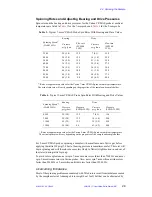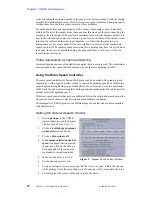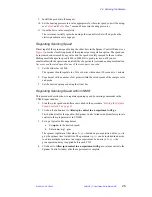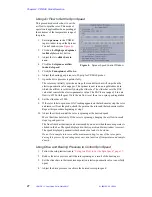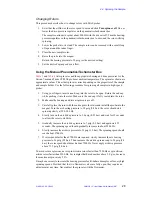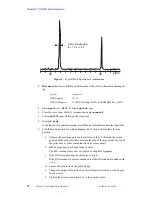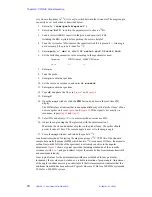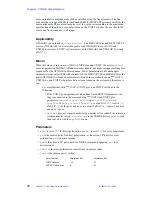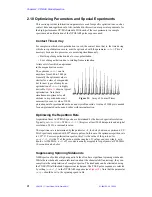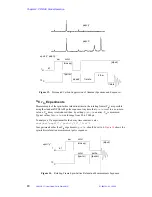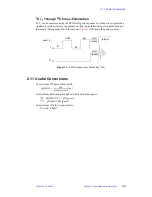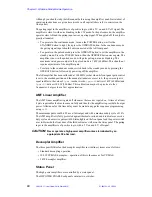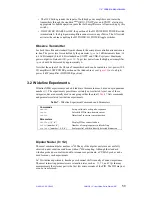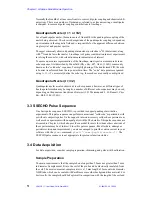
2.7 Calibrating the CP/MAS Probe
01-999162-00 C0402
VNMR 6.1C User Guide: Solid-State NMR
36
Calibrating Decoupler Power
Using the previously determined
pw
, calibrate decoupler power (
γ
B
2
) as follows.
1.
Recall the parameters used in the previous test.
2.
Set
pw, tpwr, and tpwrm
to the values obtained for the
13
C 90
o
pulse width
specification in
C Nucleus Pulse Width,” page 35
3.
Enter
dof=5e4,-5e4 d1=10 xpol=’n’
.
4.
Enter
at=0.05
.
5.
Set the following parameter values according to the spectrometer used.
6.
Enter
ga
.
7.
When acquisition is finished, measure the reduced coupling on each of the two
spectra.
8.
Enter
h2cal
to calculate
γ
B
2
.
This is the maximum decoupler power,
γ
B
2
Max. Record this value. If the value of
γ
B
2
Max fails to meet specifications, remove some of the attenuation from the input
to the highband amplifier and repeat the
γ
B
2
Max calibration.
9.
Calculate the
γ
B
2
CP (
1
H cross polarization field):
a.
γ
B
2
CP=1.0/(4.0*
13
Cpw90) where
13
Cpw90 is the value determined in the
previous section.
b.
Adjust
dipolr
and enter
ga
.
c.
Repeat step 6 and 7.
d.
Adjust the value of
dipolr
until the value for
γ
B
2
measured in 7 equals the
value calculated in step 8a.
e.
Record the values of
dipolr
and
γ
B
2
CP. These values will be used in the
next section.
“Adjusting the Hartmann-Hahn Match,” this page
Adjusting the Hartmann-Hahn Match
Hartmann-Hahn matching can be readily accomplished by using a sample of
hexamethylbenzene, HMB.
1.
Load a rotor with HMB, insert it in the probe, and spin it at about 2500 Hz.
2.
Recall the test parameters by entering
rt('/vnmr/parlib/xpolar1')
.
3.
Enter
xpol='y'
.
4.
Set
pw,
and
tpwr
to the values obtained for the
13
5.
Enter
dpwr
dipolr
and
dof
values determined in
Use the second set of values for the
1
H cross polarization field.
Parameter
INOVAcpmas
INOVAcpmas
(1 kW amplifier)
MERCURYcpmas
dpwr
63
55
63
dipolar
4095
4095
255



